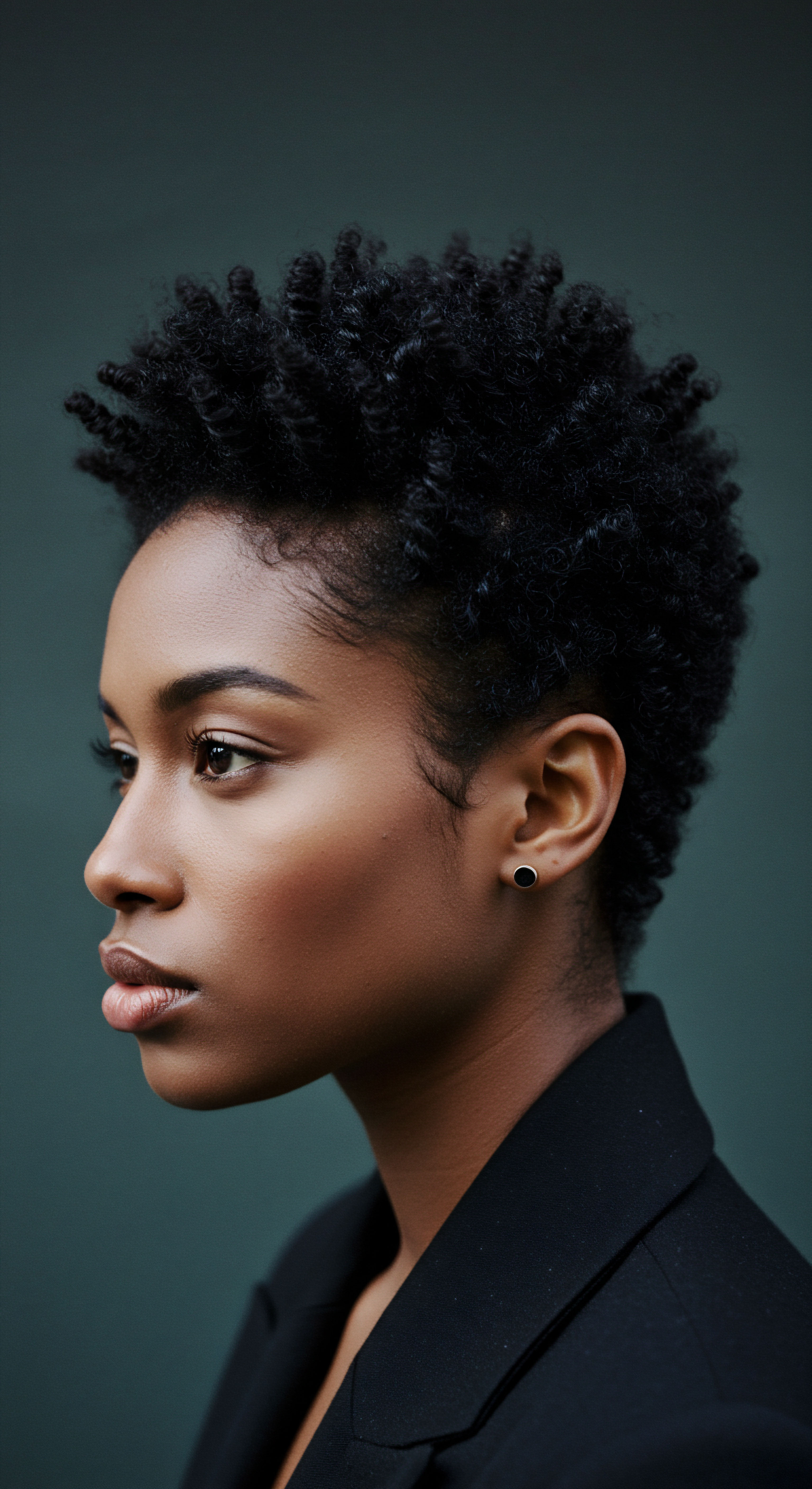
Roots
A quiet whisper from ancestral times often speaks to us through the simple rhythms of daily life, even in something as seemingly small as caring for our hair. Before the age of complex formulations and laboratory breakthroughs, humanity understood the profound connection between a thriving scalp and vibrant strands. This foundational knowledge, passed down through generations, centered not on chemical interventions, but on an intuitive understanding of the scalp as fertile ground.
Early peoples observed, perhaps without knowing the precise biological mechanisms, that what nourished the earth could also nourish the head. The earliest forms of scalp care were thus deeply interwoven with the natural world, drawing from the botanical bounty and the wisdom gleaned from observing animal behaviors.
Consider the ancient reverence for the scalp as a living extension of the body’s overall vitality. For many cultures, hair held immense spiritual, social, and aesthetic significance, making its care a sacred duty. This holistic perspective meant that practices were rarely isolated to the hair alone; they were often part of broader wellness routines that considered diet, environment, and even emotional states.
The very first methods were perhaps the simplest ❉ the gentle cleansing with rainwater, the soothing touch of a finger through strands, or the careful removal of debris. From these elemental beginnings, a rich tapestry of methods began to unfurl, each adapted to local climates, available resources, and prevailing cultural beliefs.
The earliest approaches to scalp care viewed the head as an extension of the body’s holistic well-being, drawing wisdom from the natural world.

Understanding the Scalp in Antiquity
The conceptualization of the scalp in ancient civilizations differed markedly from our modern anatomical understanding. While precise cellular structures and molecular pathways remained hidden, keen observation informed their practices. They recognized the scalp as the source from which hair sprung, understanding its need for cleanliness and gentle handling.
Without microscopes, they could still discern irritation, flaking, or excessive oiliness, prompting the development of remedies derived from readily available plants and minerals. This empirical knowledge, gained through trial and error over centuries, formed the bedrock of their hair care traditions.
- Ancient Egyptian papyri describe remedies for baldness using oils, animal fats, and ground herbs, indicating an early awareness of scalp health challenges.
- Mesopotamian texts mention the use of sesame oil and other emollients to keep the scalp supple and the hair lustrous, suggesting a focus on moisture.
- Indigenous American communities utilized plant extracts like yucca for cleansing and bear grease for conditioning, adapting to their local flora and fauna.
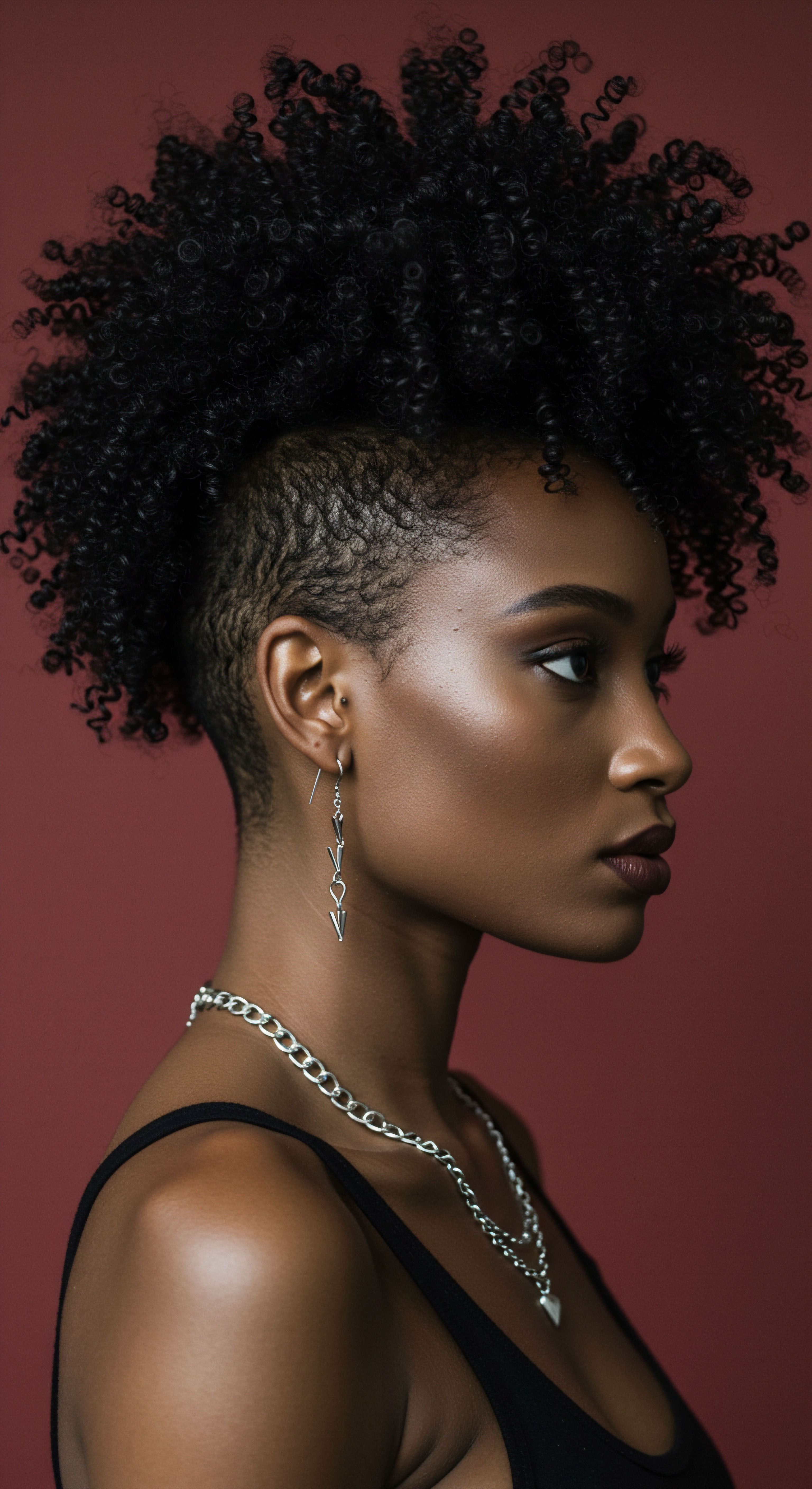
Initial Approaches to Scalp Cleansing
The act of cleansing the scalp, a cornerstone of modern hair care, has a lineage stretching back millennia. Before the advent of synthetic surfactants, people relied on natural agents that possessed saponifying properties. These were often plant-derived, gentle, and readily available. The goal was not merely aesthetic cleanliness, but also the removal of environmental impurities and excess sebum, which could otherwise impede follicle function.
For instance, many ancient cultures employed various plant parts containing saponins, natural soap-like compounds. The soapberry tree (Sapindus mukorossi or S. saponaria) was widely used across Asia and the Americas, its fruits yielding a mild lather suitable for hair and skin. Similarly, the roots of the yucca plant in North America and the bark of the Quillaja saponaria tree in South America served similar purposes.
These natural cleansers, while perhaps less aggressive than modern shampoos, offered a gentle alternative that respected the scalp’s delicate balance. They removed grime without stripping away essential natural oils, potentially preserving the scalp’s protective barrier and thus supporting follicle vitality over time.
| Natural Cleansing Agent Soapberry |
| Primary Source Sapindus fruit |
| Geographic Region Asia, Americas |
| Natural Cleansing Agent Yucca Root |
| Primary Source Yucca plant |
| Geographic Region North America |
| Natural Cleansing Agent Quillaja Bark |
| Primary Source Quillaja saponaria tree |
| Geographic Region South America |
| Natural Cleansing Agent Clay Washes |
| Primary Source Various mineral clays |
| Geographic Region Africa, Middle East, Europe |
| Natural Cleansing Agent These agents provided gentle, effective cleansing without harsh chemicals. |

How Did Early Peoples Maintain Scalp Health Without Modern Science?
The absence of scientific instruments did not deter early societies from developing sophisticated methods for scalp health. Their knowledge was experiential, refined through generations of observation and tradition. They understood that a healthy scalp supported robust hair.
This meant protecting it from the elements, providing nourishment, and maintaining cleanliness. Practices like braiding and coiling hair, often seen in African cultures, not only offered stylistic expression but also served as protective measures, shielding the scalp from harsh sun and reducing mechanical stress on follicles.
The use of plant-based oils, such as olive oil in the Mediterranean, coconut oil in tropical regions, and various animal fats, served multiple purposes. These were not just for conditioning the hair; they were often massaged into the scalp to moisturize, reduce flaking, and perhaps even to deliver beneficial compounds directly to the skin. The very act of massage, a common element across many historical scalp care routines, would have stimulated blood flow, a critical factor for nutrient delivery to the hair follicles. While the exact biochemical pathways were unknown, the observed benefits sustained these practices for centuries.
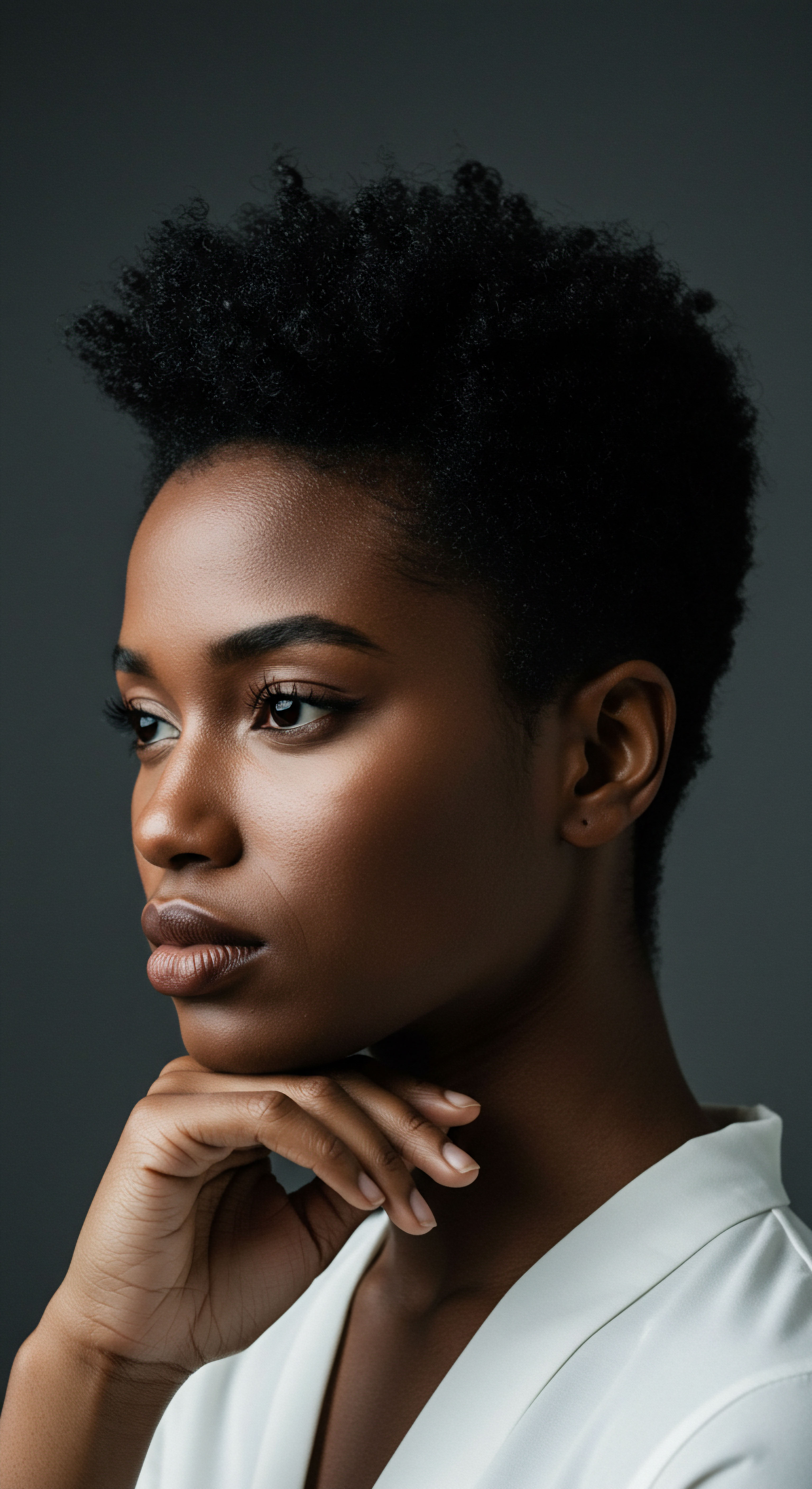
Ritual
Stepping into the realm of historical scalp care means acknowledging the rhythmic, often deeply personal, practices that shaped hair health long before our contemporary understanding of follicle biology. It is here, within the embrace of ritual, that ancient wisdom truly comes alive. These were not mere tasks; they were often meditative, communal, or even spiritual acts, woven into the very fabric of daily or weekly life.
The intention behind these rituals was not simply cosmetic, but a profound commitment to well-being, recognizing the hair and scalp as integral parts of the body’s vitality. This section peels back the layers of these historical practices, exploring how their consistent application, often over lifetimes, contributed to the resilience and vigor of the hair follicle.
From the gentle application of plant-infused oils to the rhythmic strokes of a comb made from bone or wood, each action carried purpose. The continuity of these traditions suggests an inherent efficacy, a deep-seated knowing that certain methods yielded desirable outcomes. The focus was often on soothing, stimulating, and protecting the scalp environment, creating conditions conducive to sustained hair growth. It was a patient approach, prioritizing gentle maintenance over quick fixes, a philosophy that holds particular resonance for those with textured hair, which often thrives under consistent, considerate care.
Historical scalp care was often a ritualistic commitment to well-being, with practices designed to soothe, stimulate, and protect the scalp environment.

Traditional Scalp Massage Techniques
Across diverse cultures, the practice of scalp massage stands as a consistent thread in historical hair care. Whether in Ayurvedic tradition, where practitioners used specific marma points, or in various African communities, where communal hair braiding often involved gentle scalp manipulation, the tactile stimulation was paramount. This was more than a pleasant sensation; it was a method understood to invigorate the scalp. Modern research now offers insights into the potential mechanisms behind this ancient wisdom.
A study published in Dermatology and Therapy in 2016 by Koyama et al. investigated the effects of standardized scalp massage on hair thickness. The research involved nine healthy Japanese men with androgenetic alopecia who received a 4-minute standardized scalp massage daily for 24 weeks. The findings indicated a significant increase in hair thickness, which the researchers attributed to the stretching forces on dermal papilla cells induced by the massage.
These mechanical forces, they proposed, could lead to an upregulation of gene expression associated with hair growth and a decrease in those related to hair loss. This provides a compelling modern validation for a practice deeply embedded in historical care rituals, suggesting that the consistent, gentle stimulation of the scalp, a hallmark of many ancient methods, directly contributes to follicle vitality by influencing cellular activity within the dermal papilla.
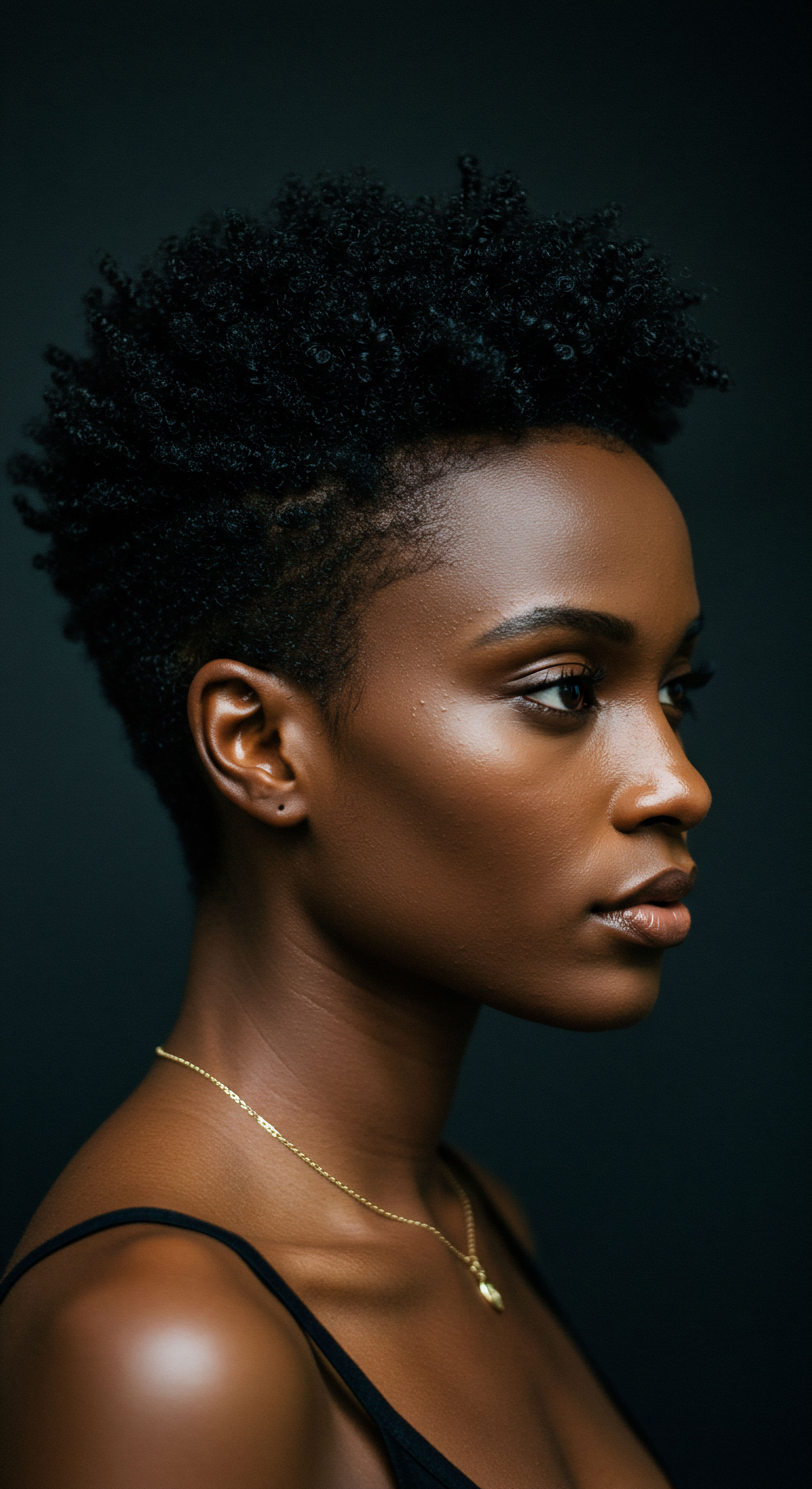
The Application of Natural Oils and Herbal Infusions
The generous use of natural oils and herbal infusions was a cornerstone of historical scalp care, particularly in regions where hair was prone to dryness or environmental stress. These concoctions were not arbitrary; they were often carefully selected based on generations of empirical observation of their effects.
- Ayurvedic Traditions frequently utilized oils infused with herbs like Bhringraj (Eclipta prostrata) and Brahmi (Bacopa monnieri), believed to strengthen hair roots and cool the scalp. These oils were typically warmed and massaged into the scalp, left on for extended periods, sometimes overnight, before a gentle wash.
- African Cultures employed a variety of plant-derived butters and oils, such as shea butter and palm oil, to protect the scalp from sun and dryness, maintaining its suppleness. These applications formed a protective barrier, reducing moisture loss and mitigating environmental damage to the follicles.
- Mediterranean Practices favored olive oil, often infused with herbs like rosemary or lavender, applied to condition the scalp and hair, believed to promote growth and shine.
The benefits of these applications extend beyond simple moisturization. Many traditional herbs possess anti-inflammatory, antimicrobial, or antioxidant properties. For instance, compounds found in rosemary have been shown to stimulate blood circulation, while neem possesses powerful antimicrobial qualities.
When applied to the scalp, these botanical agents could have contributed to a healthier microenvironment, reducing irritation and inflammation, factors known to negatively impact follicle health. By creating a calm and nourished scalp, these historical methods indirectly supported the optimal functioning of the hair follicle, allowing it to produce stronger, more resilient strands.

How Did Ancient Practices Protect the Scalp from Environmental Stress?
Beyond cleansing and nourishing, historical methods also prioritized protecting the scalp from external aggressors. Sun, wind, and harsh elements could dry out the scalp, leading to irritation and potential damage to the hair follicles. Many cultures developed ingenious ways to shield the scalp. Head coverings, such as turbans, scarves, and elaborate headdresses, were not solely for adornment or social status; they served a practical purpose in protecting the scalp from direct sun exposure and environmental pollutants.
Furthermore, styling practices themselves often acted as protective measures. Intricate braids, twists, and locs, prevalent in many African and Indigenous cultures, encased the hair, minimizing exposure to environmental stressors and reducing physical manipulation of the strands and scalp. These styles often lasted for weeks, allowing the scalp to rest from daily styling and manipulation, thus reducing stress on the hair follicles. The deliberate choice of materials for combs and tools, often natural wood or bone, also contributed to gentler handling, preventing excessive friction or breakage that could irritate the scalp or damage hair shafts near the root.

Relay
As we move from the foundational understanding and the consistent rituals, we arrive at a deeper consideration ❉ how do these historical practices, steeped in ancient wisdom, truly intersect with the intricate biology of the hair follicle? This section seeks to bridge the chasm between time-honored traditions and contemporary scientific insight, exploring the subtle yet profound ways ancestral scalp care methods may have influenced follicle vitality at a cellular and systemic level. It is here that we delve into the less obvious, the interconnected web of factors that dictate hair health, moving beyond surface observations to the underlying mechanisms.
The persistence of certain historical practices suggests an inherent effectiveness that transcends mere anecdotal evidence. Could these methods have unknowingly modulated the scalp microbiome, influenced inflammatory pathways, or even played a role in the epigenetic expression related to hair growth? This exploration requires a multi-dimensional lens, one that acknowledges the interplay of biological, psychological, social, and cultural factors that shape the health of our strands. It is a journey into the hidden logic of tradition, seeking to understand the ‘why’ behind practices that have stood the test of time.
Bridging ancient wisdom with modern science reveals how historical scalp care may have influenced follicle vitality at a cellular and systemic level.

Microbiome Balance and Ancient Practices
The human scalp is home to a complex ecosystem of microorganisms, collectively known as the scalp microbiome. A balanced microbiome is essential for a healthy scalp environment, directly impacting follicle vitality. Dysbiosis, an imbalance in this microbial community, can contribute to conditions like dandruff, seborrheic dermatitis, and even hair loss. While ancient peoples lacked the tools to identify these microscopic inhabitants, many of their practices may have inadvertently supported a healthy scalp microbiome.
Traditional cleansing agents, often derived from plants with mild saponin content, were typically less harsh and less stripping than many modern synthetic shampoos. These gentler cleansers would have removed excess sebum and superficial impurities without completely eradicating the beneficial microbial populations or disrupting the scalp’s natural pH balance. In contrast, harsh sulfates can strip the scalp of its protective acid mantle, creating an environment less hospitable to beneficial bacteria and more prone to the proliferation of opportunistic pathogens. Furthermore, the use of natural oils and herbal infusions, some possessing antimicrobial or antifungal properties (like tea tree, neem, or specific essential oils), could have helped to keep problematic microbial overgrowth in check, maintaining a harmonious balance conducive to follicle health.
- Gentle Cleansing ❉ Natural saponins preserved the scalp’s acid mantle.
- Antimicrobial Herbs ❉ Specific plant extracts inhibited pathogenic microbes.
- Oil Applications ❉ Maintained moisture, reducing irritation that could compromise the microbiome.

The Role of Inflammation in Follicle Health
Chronic low-grade inflammation of the scalp is a silent antagonist to hair follicles, often leading to miniaturization, weakened strands, and eventual hair loss. Many historical scalp care methods, even without direct knowledge of inflammatory pathways, possessed properties that could have mitigated this cellular stress.
Consider the widespread use of anti-inflammatory herbs such as aloe vera, calendula, chamomile, and various types of clay in traditional scalp treatments. These botanicals contain compounds like flavonoids, polyphenols, and mucilages that are known to soothe irritation and reduce redness. When applied topically through rinses, masks, or infused oils, these ingredients could have directly calmed inflammatory responses on the scalp.
Moreover, the emphasis on gentle handling, manual detangling, and protective styling minimized physical trauma to the scalp, which itself can trigger inflammatory cascades. By fostering a calm, non-inflamed environment, historical practices inadvertently provided a nurturing space for follicles to thrive, protecting them from the detrimental effects of persistent inflammation that can prematurely push hair into its resting phase.
| Botanical Source Aloe Vera |
| Common Historical Use Soothing burns, moisturizing scalp |
| Relevant Bioactive Compounds Polysaccharides, anthraquinones |
| Botanical Source Chamomile |
| Common Historical Use Calming skin, reducing irritation |
| Relevant Bioactive Compounds Flavonoids, terpenoids |
| Botanical Source Neem |
| Common Historical Use Antimicrobial, anti-inflammatory |
| Relevant Bioactive Compounds Nimbidin, azadirachtin |
| Botanical Source Green Clay |
| Common Historical Use Detoxifying, absorbing impurities |
| Relevant Bioactive Compounds Minerals (montmorillonite) |
| Botanical Source These natural agents likely contributed to reduced scalp inflammation. |

Could Ancestral Practices Influence Hair Follicle Gene Expression?
The cutting edge of hair science increasingly explores the concept of epigenetics, the study of how environmental factors and lifestyle choices can influence gene expression without altering the underlying DNA sequence. While a direct causal link between specific historical scalp care methods and epigenetic modifications affecting hair follicles is still an emerging area of research, the consistent, long-term application of certain practices could hypothetically have played a role.
For example, practices that consistently reduced oxidative stress and inflammation on the scalp, such as antioxidant-rich herbal applications or gentle cleansing, could have created a more favorable cellular environment. Oxidative stress and chronic inflammation are known to induce epigenetic changes that can negatively impact cell function, including that of dermal papilla cells which are critical for hair growth. Conversely, a consistently healthy scalp microenvironment, maintained by ancestral practices, might have supported optimal gene expression patterns for follicle cycling and hair protein synthesis. The regular stimulation from scalp massage, as suggested by the Koyama et al.
study, could also be viewed as a mechanical signal that influences gene expression related to hair growth factors. While this remains largely theoretical, it posits a fascinating possibility ❉ that the cumulative effect of generations adhering to certain beneficial scalp care rituals could have, over vast stretches of time, subtly influenced the genetic predispositions for hair health within populations. This represents a frontier where cultural heritage and advanced biology may one day meet, offering a profound understanding of our follicular legacy.
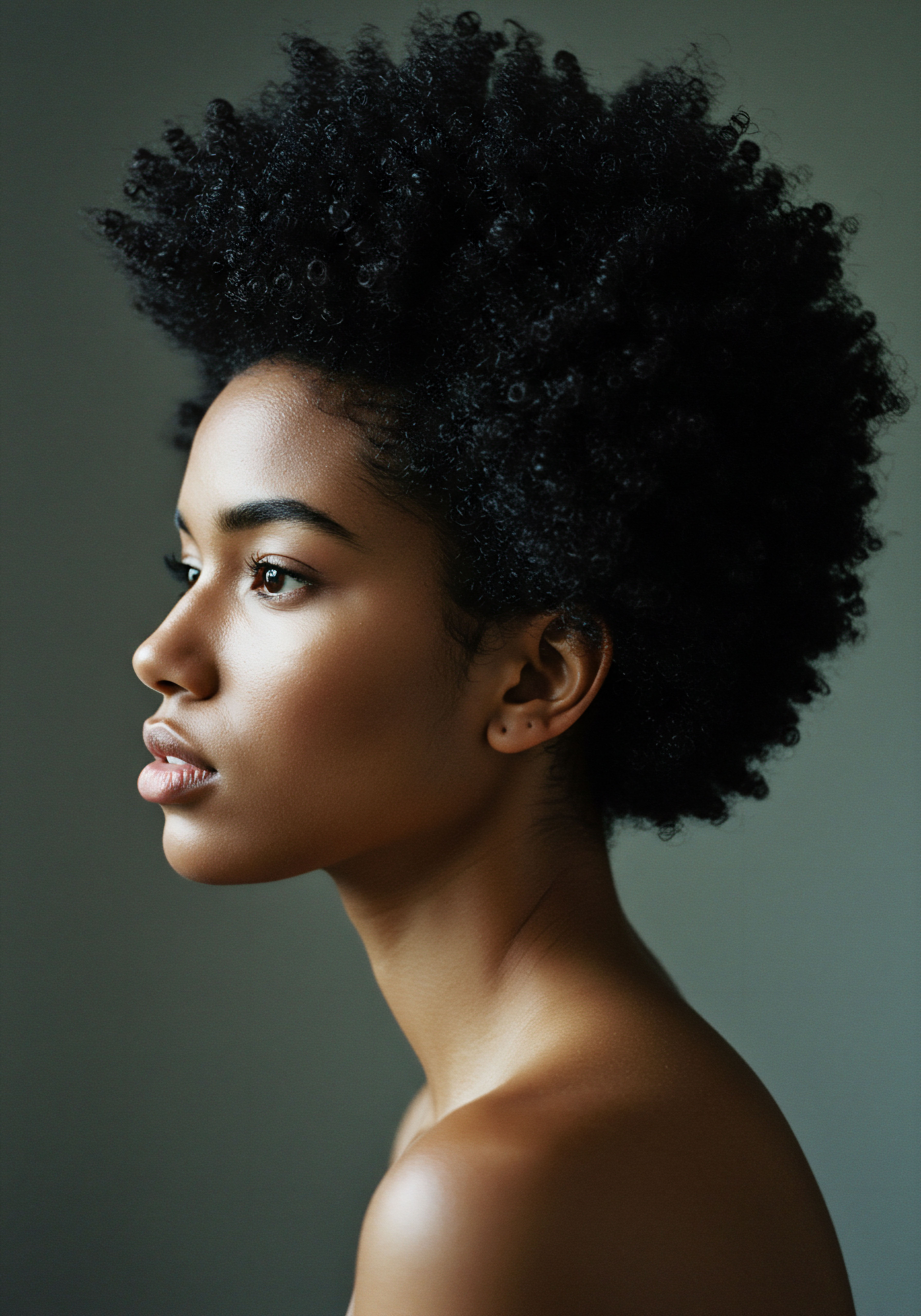
Reflection
As we draw our exploration to a close, it becomes clear that the echoes of historical scalp care methods resonate deeply within the contemporary understanding of follicle vitality. The gentle touch, the reverence for natural ingredients, and the consistent rhythm of care that defined ancestral practices offer more than mere nostalgic charm; they present a compelling framework for holistic hair health. Perhaps the most enduring lesson from these ancient traditions is the profound wisdom in treating the scalp not as a separate entity, but as an integral part of our living being, a vibrant ecosystem deserving of mindful attention. In an age of rapid innovation, the quiet strength of these time-honored approaches invites us to pause, to listen to the whispers of the past, and to reconsider what truly nourishes our strands from their very roots.

References
- Florence, P. (2004). Hair ❉ A Cultural History. Berg Publishers.
- Koyama, T. Kobayashi, K. Hama, T. Murakami, K. & Ogawa, R. (2016). Standardized Scalp Massage Results in Increased Hair Thickness in Males with Androgenetic Alopecia. Dermatology and Therapy, 6(1), 1–11.
- Pole, S. (2006). Ayurvedic Medicine ❉ The Principles of Traditional Practice. Elsevier Churchill Livingstone.
- Spady, D. (2000). Traditional African Hair Adornments. The Africa World Press.
- Zviak, C. (1986). The Science of Hair Care. Marcel Dekker.
- Mitchell, J. C. (1979). Botanical Dermatology ❉ Plants and Plant Products Injurious to the Skin. Greengrass.
- Randall, V. A. & Messenger, A. G. (2000). The Biology of Hair Follicle. Informa Healthcare.
- Bussmann, R. W. & Sharon, D. (2015). Traditional Medicinal Plants of the Andes ❉ From Ancestral Knowledge to Modern Applications. Springer.
- Proksch, E. & Jensen, J. M. (2008). The skin’s barrier function in healthy and diseased skin. Current Problems in Dermatology, 36, 1–10.
- Gupta, A. K. & Sharma, V. (2018). Role of scalp microbiome in hair health and disease. Journal of Dermatology and Cosmetology, 2(1), 1-5.